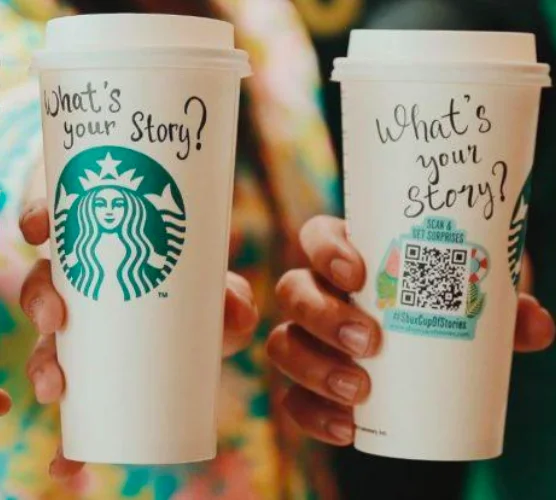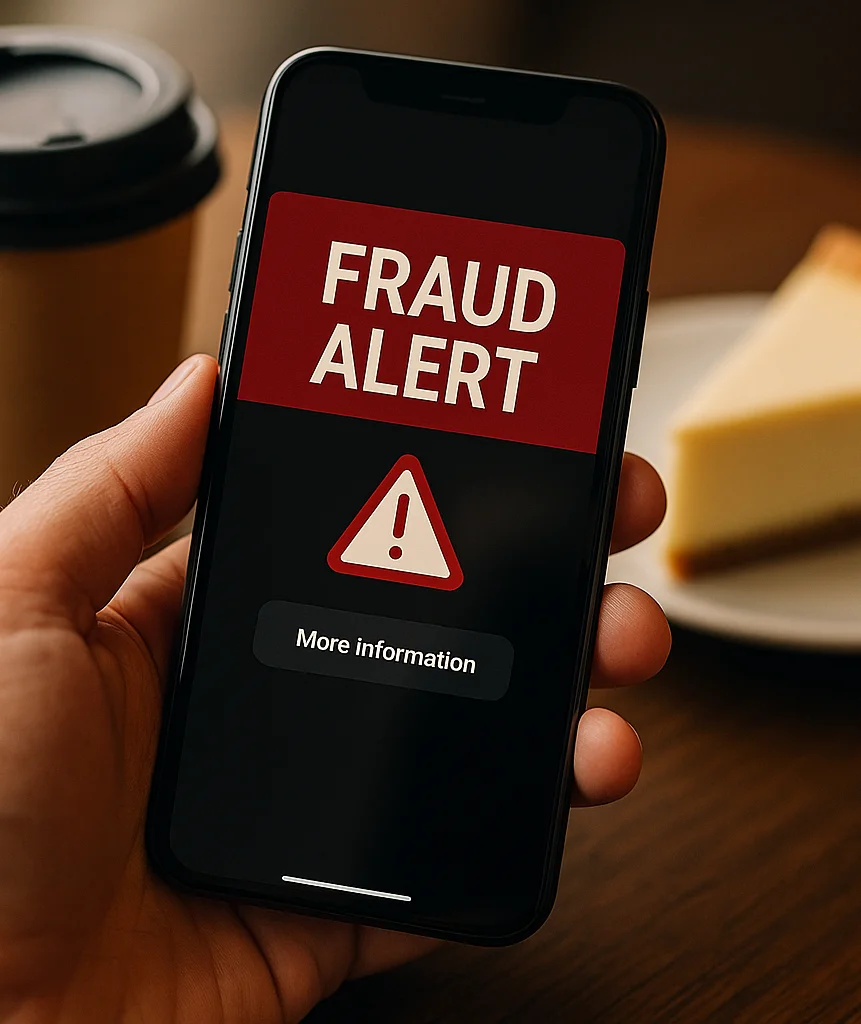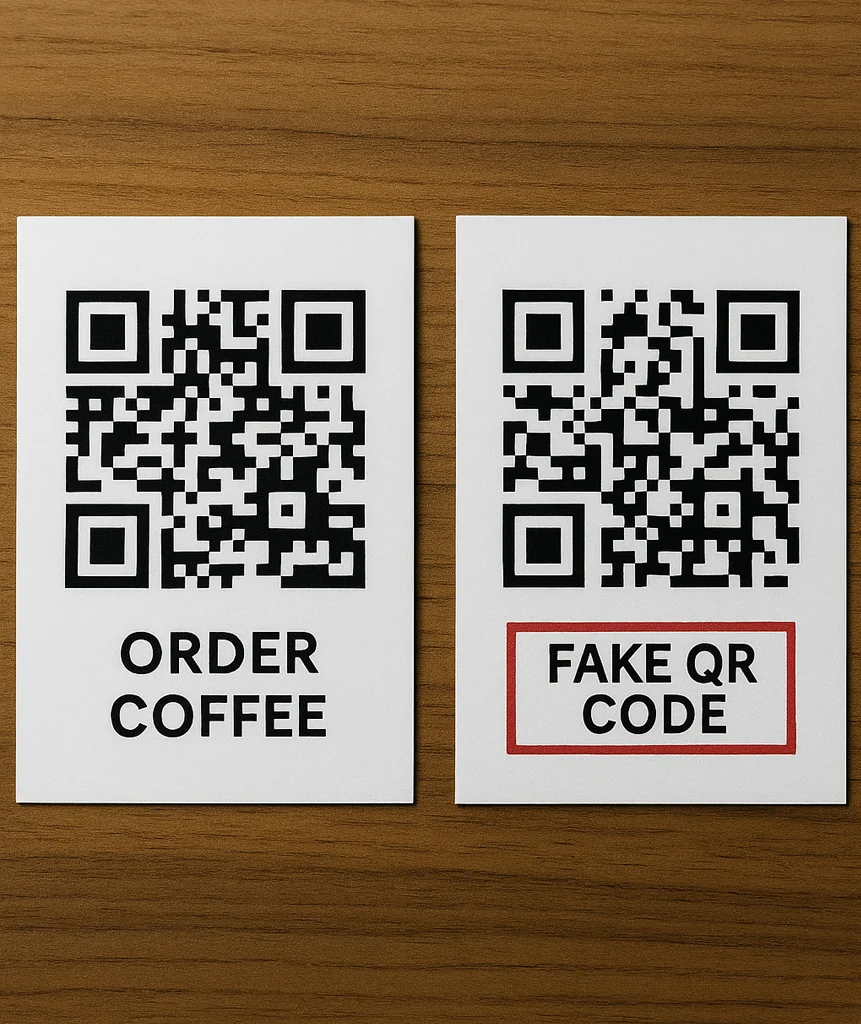Blog
Go backQR-Code Overload: When Every Coffee Cup Becomes a Phishing Surface
Hot Takes · June 20th, 2025
Sip 1 – The scan
You're running late for a meeting, so you duck into a café that promises "order-ahead" on every tabletop sticker. A friendly barista points to a fresh-looking QR code stamped on your to-go cup: "Scan for double points." You line up the phone, miss the faint wrinkle where someone has pasted their own label and tap the preview without reading the URL. Ten seconds later the page thanks you for adding a new payment card. Coffee secured, inbox ping muted - you walk out convinced life is friction-free.
 That innocent-looking QR code on your coffee cup might be a sticker redirecting you to a fake payment page.
That innocent-looking QR code on your coffee cup might be a sticker redirecting you to a fake payment page.
 The moment of realization: that quick scan just compromised your payment details.
The moment of realization: that quick scan just compromised your payment details.
Sip 2 – The sting
Across town, your bank's fraud engine blips: a test charge from an online gaming site, then a $900 electronics order. The call from "Visa Fraud Prevention" reaches you just as you finish the latte. You freeze, replay the morning: no lost wallet, no odd ATM - just that quick scan. The banker says it's happening a lot. Criminals print a near-perfect replica of the café's loyalty code, slap it over the real sticker and funnel scanners to a clone page. Everything else is muscle memory: autofill address, Face-ID confirm, coconut-milk upgrade added to cart, malware gets your card.
Sip 3 – The bigger picture
Later, you learn the FBI's cyber unit calls it quishing - QR phishing - because the square hides the destination until after you commit. Retailers love the speed; scammers love the silence. Between 2024 and early 2025, QR-driven fraud complaints spiked, partly because QR codes migrated from posters to payment terminals, parking meters, airport menus, even vaccine cards. Each new context trains you to scan first, think later.
A numbers problem, not a niche problem
- FTC alerts note a steady uptick in QR-related fraud complaints through 2024 and early-2025, ranging from invoice scams to malicious package-delivery notices.
- Private threat-intel shop Keepnet says quishing attempts grew 51% YoY in 2024 as marketers normalised "scan-to-pay" and "scan-to-survey" workflows.
- Australian investigators warn that tampered restaurant codes have already siphoned "thousands of dollars" from diners via fake payment pages.
Why the bad guys love the square
- Invisible redirect – Humans can hover over blue links; QR codes hide the URL until it's too late.
- Easy to replace – A sticker over the original code on a table-tent menu takes two seconds to slap on.
- Trust by context – In a café or airport lounge, people assume the venue printed the code.
- BYOD jackpot – The victim supplies the camera, browser, network, even FaceID authorisation. No exploit required.
 Can you spot the difference? The fake QR code (right) is nearly identical to the legitimate one (left).
Can you spot the difference? The fake QR code (right) is nearly identical to the legitimate one (left).
What you do next time
- Look before you leap. Modern phone cameras show the decoded URL; glance at it. If it's a random string or misspelled brand, back out.
- Prefer vanity text. Trust codes that print a readable domain directly beneath the square - harder for a sticker to fake.
- Shop owners, help us out. Rotate codes regularly, laminate signage and audit once a shift. A ten-second peel test beats a chargeback queue.
Until phone operating systems add "verified QR" badges - or marketers break their sticker habit - the safest move is the slow one: type the address yourself. Your coffee cools by maybe a degree; your bank balance stays perfectly warm.
TL;DR
That "scan for points" code on your latte cup might be a sticker redirecting you to a fake payment page. QR-phishing (quishing) scams are climbing fast because people scan without checking the URL. Pause long enough to read the preview link, prefer codes with a printed domain underneath and café owners should rotate and audit their signage. A few extra seconds beats cancelling your card over iced coffee.